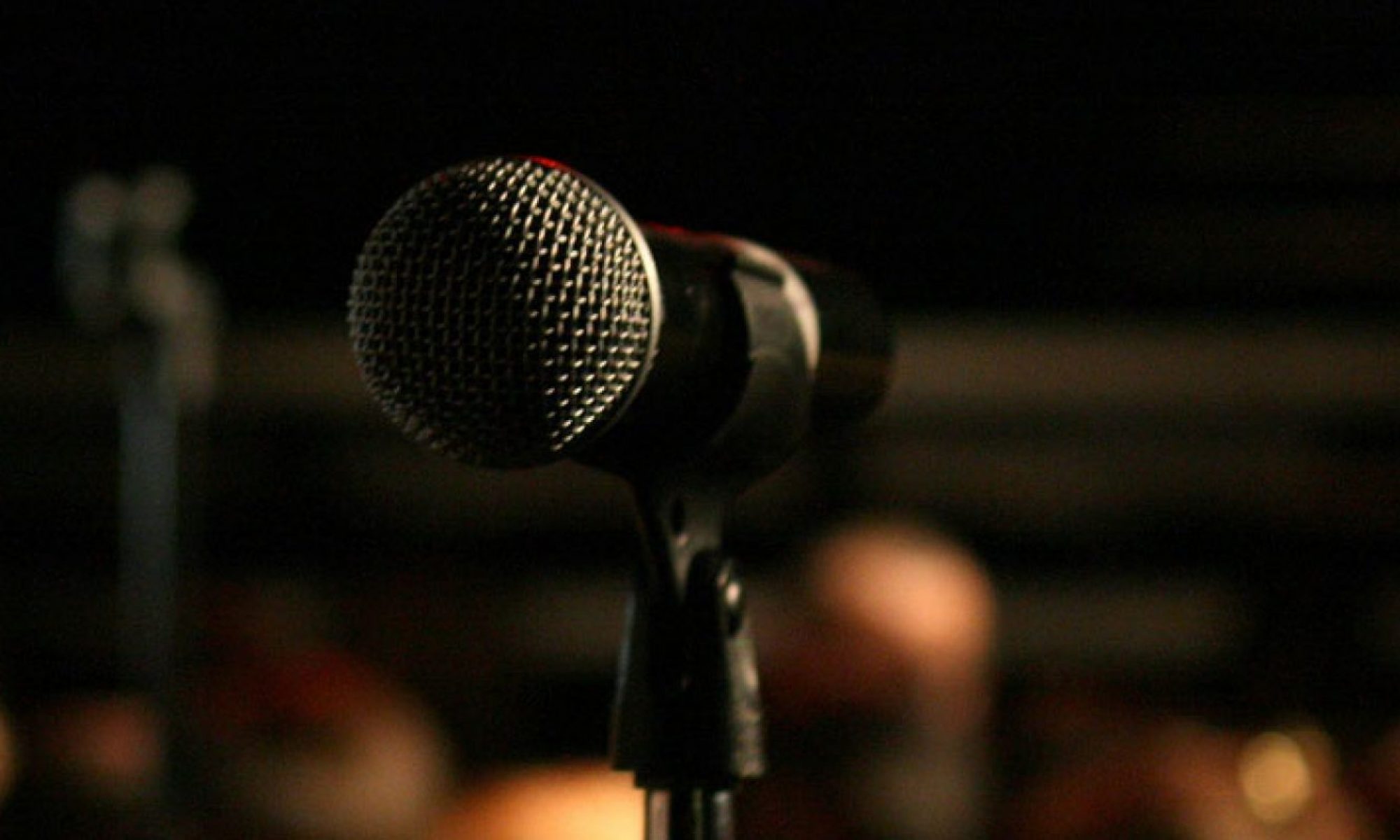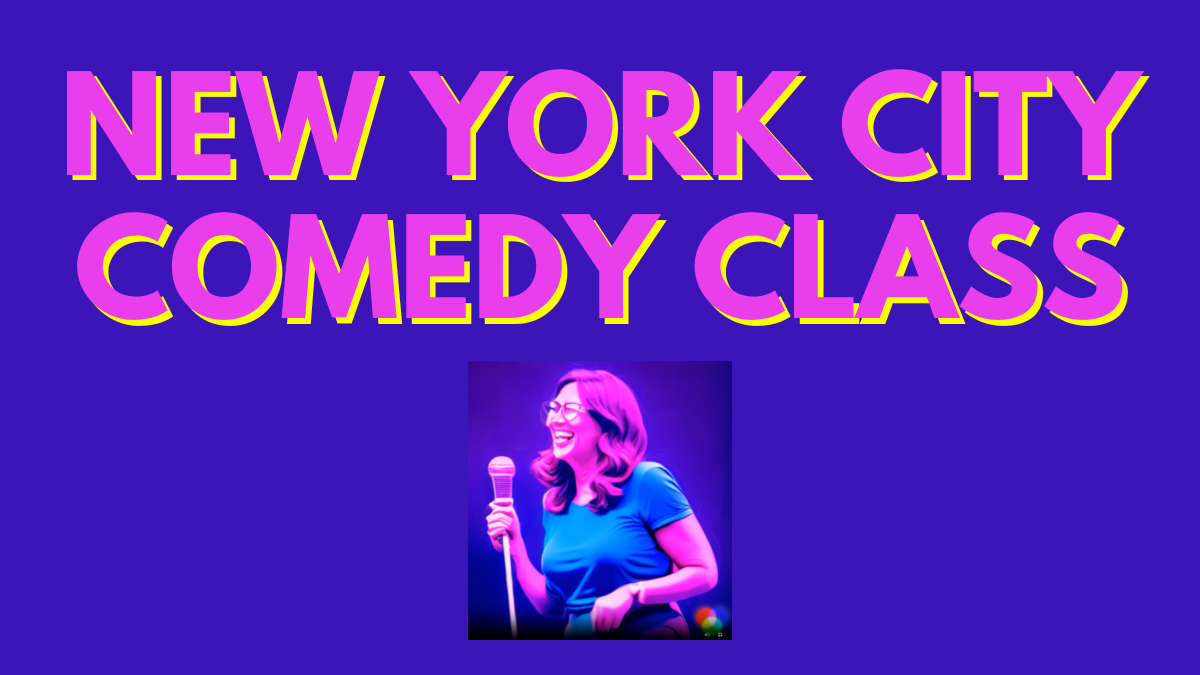If you’re starting out in comedy and trying to get paid to perform as a stand-up comedian, the most likely way you’ll be able to break in will be as a host or emcee. This means you go up first on the show to a cold audience. It’s the hardest spot on the show.
But emceeing sharpens your comedy skills because you have to talk to the crowd. This makes you funnier on your feet, more comfortable handling hecklers and you’ll even sound more conversational. Which are all skills you should acquire before you can feature or headline.
Here’s our MCing tips based on our personal experiences and numerous conversations with other professional comedians.
- Come in with high energy. You want to get the audience’s energy as high as possible. Don’t come in sounding all depressed and woe is me. Even if that’s your “natural” stage presence, if you’re hosting, you gotta pep it up.
- Start by saying something along the lines of, “Hey everyone, we have a great show for you tonight.” Make sure you’re smiling and that you sound genuine.
- Within twenty seconds of starting, get the audience to clap, and then clap again. Say something like “Clap it up for yourselves” or “Who’s happy it’s a Friday night?” – whatever gets them to make noise. Then, unless you get an amazing response, say “You can do better, let’s try that again.” It (subconsciously) communicates to the audience that you’re in total control.
- Go into crowd work. Start by asking some standard questions like “Where are you from?”, “What do you do for work”, “How long have you been dating?” etc. Even better, come up with more interesting questions (in advance) – especially ones that can transition into your existing material. This way even if the audience’s answer is lame, you can take it somewhere funny. Try to make jokes about their answers, or joke about the fact that their answers are boring. Don’t panic if some of your improvised joke attempts miss. The key here is high positive energy.
- Don’t talk to more than 3 tables in a row, or people will get bored and/or hate you.
- Do a couple of your jokes.
- Repeat steps 4 through 6 until they’re constantly laughing at your jokes, at which point no need to continue doing crowd work.
No matter the response you’re getting, only do material for the final two to five minutes of your set. You want to get the audience used to the rhythm of jokes. Even if your material isn’t getting as big of laughs as the crowd work you just did, your job is to get the crowd ready for the next comedian to be able to just do their jokes. - Alternately, you can open with a quick joke or two (not longer than a minute) and then go into crowd work. Or if the material is killing right away, you can skip crowd work altogether. The best is if you have crowd-work questions that will lead into your material. Example: “Anybody married in here? Oh yeah, how long? I’ve actually been married for twenty years, so I’m winning, for now.” (Then go into your actual marriage jokes.)
- After your last joke, give the ground rules and get loud applause going for the next comic. Example: “We have an awesome show. Your waiters will be coming around with drinks. Please keep talking to a minimum. And let’s have fun. Are you ready for your next comedian?” DON’T ask “Who’s ready to get this show started?” or “Are you ready for your first comedian?” The show has already been in progress since you got up there and you are their first comedian.
- Make sure the comedian’s name is the last part of their introduction. You want to say “This next comedian has been on Comedy Central please put your hands together for John Doe.” Do not say “Your next comedian is John Doe, he’s been on Comedy Central.”
- Run the logistics. Make sure to get the proper pronunciation of each comedian’s name and their credits. Are you timing the performers and giving them the light or is someone else doing it? If it’s on you, make sure you have a stopwatch/phone to time them. And know where the red light is and how it turns on/off. If there’s no red light, tell comedians you’re lighting comedians with your phone. And ask comedians if they want a 1 or 2 minute light or what.
- When you come on stage between each comic, make sure to maintain a high level of energy to keep the audience in their seats and excited about the next comic. First say, “How about another round of applause for [previous comic’s name].” Then either go into a joke or two, or just introduce the next comedian. If there are more than 3 comedians on the show, I don’t recommend doing time between the first and second comedian, so that the audience doesn’t think you’ll be slowing down the show after each performer.
BONUS: If you can come up with a quick one or two line joke based on the previous act’s closing bit, that’s a great way to keep the show feeling connected and as one. Example: If the last comic said something like “Then I passed out in an alley, and woke up without a wallet,” you can come up there and say “So I was in an alley last night, going through Joe’s wallet…” - Most important, the emcee has to be a person.You can’t talk at people, you have to talk to them. (This applies to regular stand-up spots as well, but especially if you’re the host.) If you don’t get many laughs as a host, but your energy is positive and you’re smiling the whole time, the audience is relaxed and engaged and the first comedian does well, you did your job (even if you don’t feel great about it).


